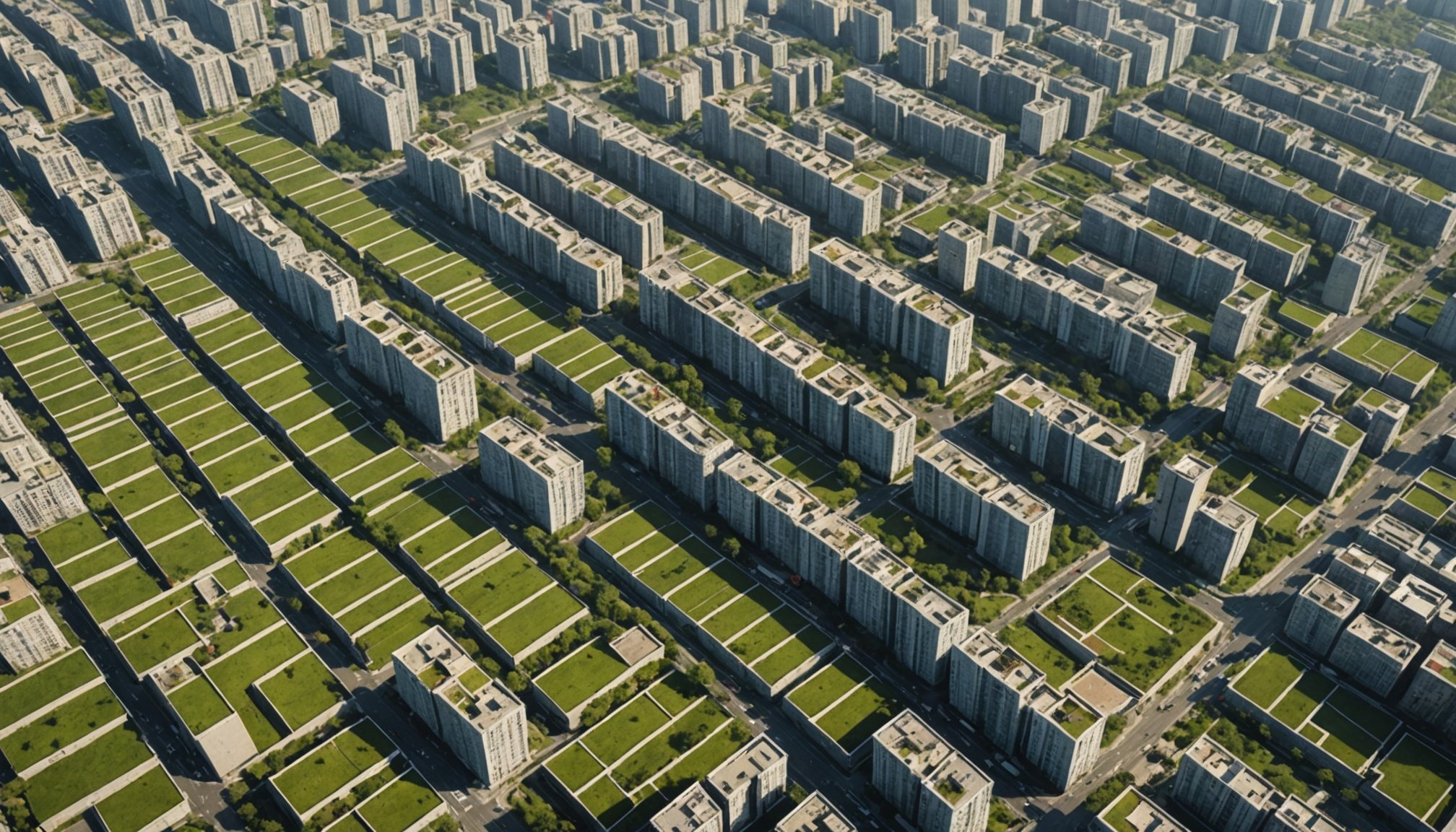Understanding Eco-Friendly Urban Planning
Eco-friendly urban planning is a comprehensive approach that seeks to harmonize the built environment with natural ecosystems. Its core principles revolve around sustainable design, which ensures that urban development does not detract from environmental quality or resource availability for future generations. Sustainable design plays a critical role in crafting urban spaces that are both livable and environmentally conscious.
At the heart of eco-friendly urban planning is the concept of urban ecosystems, which are integrated to minimize the ecological impact of development projects. Urban ecosystems encompass green spaces, water management systems, and renewable energy solutions that support biodiversity and promote natural processes in the city landscape.
Also read : Achieving the ideal balance: integrating heritage preservation with modern needs in uk property renovations
The importance of sustainable design cannot be overstated. It involves thoughtful layout and construction practices that reduce energy consumption, lower carbon emissions, and enhance quality of life by providing cleaner air and access to green spaces. Urban ecosystems, as components of this design, include parks, green roofs, and rain gardens, which serve to mitigate urban heat islands and manage stormwater effectively.
By championing eco-friendly urban planning and supporting urban ecosystems, cities can evolve into more sustainable entities that contribute positively to both residents and the environment. This strategic planning fosters resilience against climate change and promotes an enduring balance between urban and natural elements.
Have you seen this : Creating cozy urban homes: essential design tips for pet-friendly apartments
Low-Impact Development Practices
Low-impact development (LID) practices are vital for minimizing the environmental footprint of urban growth. These strategies focus on managing stormwater in ways that mimic natural processes, utilizing techniques such as rain gardens and permeable pavements. By treating and infiltrating stormwater on-site, LID supports healthier urban environments.
Green infrastructure is a cornerstone of LID, incorporating elements like green roofs, bioswales, and urban forests. These systems serve multiple purposes—improving air and water quality, providing habitat for urban wildlife, and enhancing the aesthetic value of urban settings. They are essential in maintaining ecological functions within built-up areas.
Implementing sustainable practices in urban development presents numerous benefits. It reduces strain on municipal drainage systems, lowers the risk of flooding, and curtails pollution entering rivers and streams. Moreover, these practices foster greater community resilience to climate change impacts, such as increased rainfall and extreme weather events.
Key elements of LID include:
- Water conservation through smart landscaping and efficient water systems
- Energy efficiency with renewable energy applications and building designs
- Promoting biodiversity by integrating natural habitats into urban spaces
In the quest for sustainability, these strategies serve as both preventive and adaptive measures, crucial for nurturing eco-friendly urban landscapes.
Design Principles for Densely Populated Areas
Creating sustainable urban environments in densely populated areas requires innovative design principles tailored to unique challenges. High-density urban settings often contend with limited space and resource constraints, making it crucial to optimize space efficiently while remaining sustainable.
One such principle is the incorporation of mixed-use development, where residential, commercial, and recreational facilities coexist. This reduces the need for extensive transportation, thus minimizing the carbon footprint. Another strategy is the development of vertical gardens and green roofs, which enhance air quality and provide insulation, demonstrating how sustainable practices can be harmoniously integrated into urban landscapes.
Flexible spaces are vital in densely populated areas to ensure adaptability to changing needs. Adaptive reuse of older buildings can combat resource scarcity and preserve historical value. Additionally, smart public transportation systems alleviate traffic congestion and pollution, further contributing to urban sustainability.
Balancing urban growth with the need for green spaces is one of the most pressing density challenges. Incorporating urban parks and vertical greenery not only improves aesthetic value but also supports biodiversity and community well-being. By prioritizing these design principles, cities can create compact, thriving areas that meet human needs without overextending environmental resources.
Case Studies in Eco-Friendly Urban Development
Examining case studies of eco-friendly urban development offers valuable insights into successful implementations. These successful projects provide a roadmap for cities aiming to promote sustainability and adapt to modern challenges. One notable example is the Vauban District in Freiburg, Germany. Known for its cutting-edge approach, Vauban combines sustainable design with mixed-use development, integrating transport-oriented solutions and renewable energy.
Another noteworthy project, Singapore’s Gardens by the Bay, demonstrates how urban ecosystems can flourish within cityscapes. The site’s green infrastructure includes iconic Supertrees and conservatories that showcase sustainable energy usage and water conservation practices. These structures illustrate how urban redevelopment can support biodiversity and environmental awareness.
Lessons learned from such endeavours highlight the importance of community involvement and proactive policy support. Successful projects often stem from collaborations between government entities, private developers, and local citizens. This synergy fosters sustainable solutions tailored to unique urban needs.
Analyzing the impact of these projects reveals positive outcomes, including improved urban livability and reduced ecological footprints. These case studies emphasize that comprehensive planning and localized strategies can transform urban environments, paving the way for a greener future. They serve as inspirational models for cities globally seeking to merge urban growth with ecological integrity.
Tools and Resources for Implementation
Urban planners and architects aiming for eco-friendly urban planning have a wealth of tools and resources at their disposal. These implementation tools are key in translating concepts into tangible, sustainable designs. Among these tools, Geographic Information Systems (GIS) enable planners to analyze spatial data, facilitating strategic decision-making processes for urban developments.
A comprehensive resource guide for sustainable practices is essential. The World Bank offers guidelines focusing on resource-efficient urban spaces, emphasizing renewable energy integration, waste reduction, and water conservation. Such guides support planners in adhering to sustainable standards, ensuring development aligns with environmental goals. Additionally, the US Green Building Council’s LEED certification serves as a benchmarking tool, promoting best practices in energy-efficient building design.
For effective implementation of sustainable solutions, architects can benefit from simulation software like EnergyPlus, which optimizes building energy consumption. Furthermore, community engagement platforms foster collaborative urban planning, soliciting input from residents to tailor projects to local needs. These resources emphasize practicality and inclusivity, bolstering the success of eco-friendly designs.
By leveraging these tools and resources, planners can enhance urban spaces to foster resilience, sustainability, and livability, aligning with environmentally conscious urban development goals.
Challenges and Solutions in Low-Impact Development
Low-impact urban planning faces numerous urban challenges that require thoughtful, creative solutions. One prevalent challenge is the integration of sustainable systems within existing infrastructure, where technical and financial limitations can impede progress. Sustainable solutions such as phased implementation can mitigate these issues, allowing gradual adaptation and minimizing immediate costs.
Additionally, balancing development with conservation often presents significant hurdles due to conflicting stakeholder interests. Here, the role of policy implications becomes crucial. Policies advocating for transparent public engagement and incentivizing sustainable practices encourage more harmonious urban growth. For example, incentives for using green infrastructure like permeable pavements and rain gardens can drive more developers toward eco-friendly choices.
Innovative strategies also play an important role in overcoming these challenges. Incorporating technological advancements, such as smart water management systems, can enhance the efficiency of low-impact development projects. These technologies enable precise monitoring and control of resource usage, optimising sustainability.
Ultimately, fostering an environment where sustainable solutions and robust policy frameworks coexist ensures a resilient future for urban landscapes. By embracing cutting-edge technologies and comprehensive policies, urban planners can navigate the complexities of low-impact development and champion sustainable progress in urban environments.




